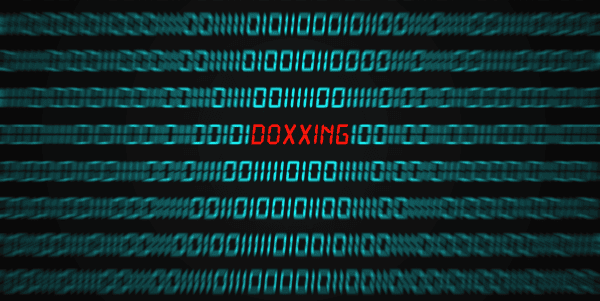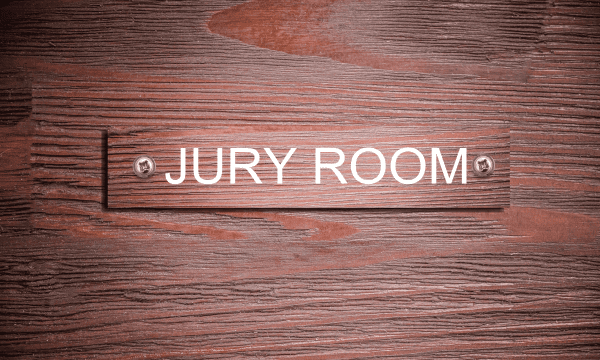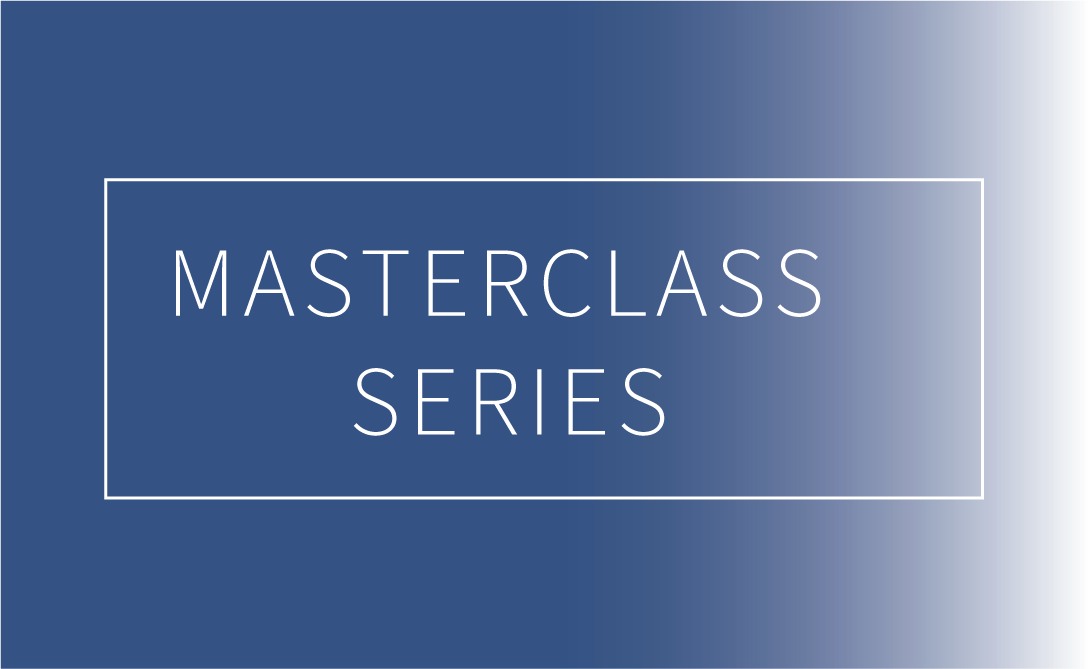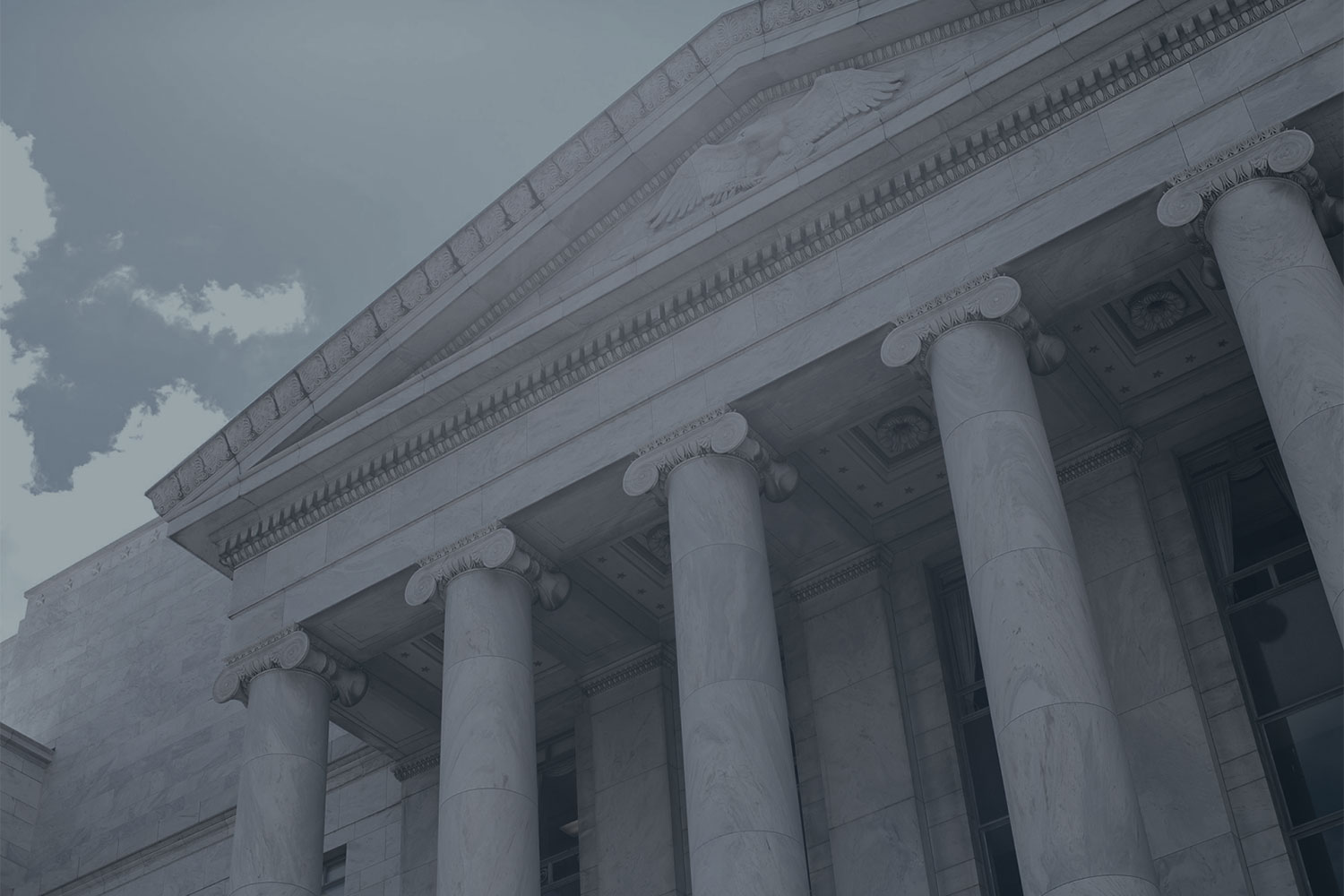Author
On May 19, 2025, President Trump signed into law the Tools to Address Known Exploitation by Immobilizing Technological Deepfakes on Websites and Networks Act (Take It Down Act).1 Co-sponsored by Sens. Cruz (R-TX) and Klobuchar (D-MN), the bill passed the House by a vote of 409-2 and cleared the Senate with unanimous consent.2 More than 100 organizations, including Microsoft, the NCAA, and the National Association of Counties, endorsed the legislation.3 The law is a federal response to the proliferation of nonconsensual intimate imagery (NCII).4 While all 50 states and the District of Columbia have some form of NCII protections,5 many lack protections against NCII created with software or artificial intelligence, which the Take It Down Act defines as “digital forgeries.”6 The Take It Down Act criminalizes both unadulterated NCII and digital forgeries.4
The Take It Down Act also includes a notice-and-removal section which mandates that covered platforms provide the public with the ability to notify the platform if content was published without consent.7 The platform must then remove the offending content and make a reasonable effort to remove identical copies within 48 hours.8 Enforcement of the notice and removal section is left to the Federal Trade Commission (FTC).9
Supporters of the law say it provides long-overdue, nationwide protection against unadulterated NCII and digital forgeries10 while supporting state efforts to combat NCII by reducing jurisdictional hurdles.11 Critics, however, argue it could be used to suppress free speech because it lacks sufficient safeguards against abuse.12
The Take it Down Act as an Additional Avenue for Victims
The Take It Down Act does not include a preemption clause, allowing state NCII laws to work concurrently. As a result, victims now have more opportunities to protect themselves from all forms of NCII.13 The law also empowers the FTC to oversee covered platforms and their efforts to remove such content.14 States often struggle with forcing platforms to remove content as many of the platforms have domains located either in another state or another country, which places them outside of the jurisdiction of the state governments.2 The FTC, by contrast, has broader jurisdiction and is better positioned to regulate what platforms do and do not permit.15
The Take It Down Act does not include an express private right of action. While a federal civil private right of action against unadulterated NCII has existed since the reauthorization of the Violence Against Women Act (VAWA) in 2022,16 the 2022 law’s application to digital forgeries is currently unsettled.17 The passage of the Take It Down Act may be used to argue both sides of this issue in the future. Because the Take It Down Act creates different offenses for unadulterated NCII versus digital forgeries, and because Congress did not amend the VAWA to specifically include digital forgeries, courts may infer that Congress intended the private right of action to apply only to unadulterated NCII.2
Alternatively, the Take It Down Act defines a “digital forgery” as “any intimate visual depiction . . . created through the use of software . . . or any other computer-generated or technological means . . .”18 The 2022 law also uses the term “intimate visual depiction” to provide an express right of action to individuals. While the Take It Down Act is not explicit, courts could interpret digital forgeries as a subset of intimate visual depictions as defined in the 2022 law. In that instance, the private right of action under VAWA could be construed to include digital forgeries.
Regardless, states such as New York,19 which provide private rights of action for both unadulterated NCII and digital forgeries, are not limited by the Take It Down Act. As such, victims can continue using private rights of action under state law. It remains to be seen, however, whether courts will extend the federal civil private right of action to include digital forgeries.
Critics Warn Notice-and-Removal Provision May be Used to Suppress Free Speech
The notice-and-removal provision requires platforms to remove allegedly offending content within 48 hours and to make a good faith effort to remove duplicate content.20 However, the law includes no safeguards against false or malicious complaints. The law provides a limitation of liability for platforms that remove content even if the content was lawfully posted.21 This limitation of liability incentivizes faster removal, without adequately verifying if it constitutes genuine NCII. Failure to remove content within the 48 hours results in sanctions by the FTC.22
Both the Cato Institute and the Cyber Civil Rights Initiative (CCRI) compared the Take It Down Act unfavorably to the frequently maligned Digital Millenium Copyright Act (DMCA). 23 The DMCA is the law governing copyright claims online. Congress passed it in 1998 to update federal copyright law as the use of the internet to transfer data was increasing.24 It is the law which platforms like YouTube follow when they remove copyrighted videos or audio that were posted without authorization.25
The DMCA includes procedural safeguards such as a counter-notice mechanism for the accused and penalties for filing frivolous claims.26 Even with these protections, platforms are frequently inundated with copyright takedown claims and tend to remove content without assessing the legitimacy of each claim.25 The DMCA does allow copyright claims to be resolved by the courts because the response to a counter-notice is legal action, not FTC involvement.27
The Take It Down Act, by contrast, contains no comparable safeguards. The Cato Institute and CCRI fear the Take It Down Act may be used to censor free and lawful content which individuals or groups dislike, even if it was lawfully posted. Platforms are required to remove all content attached to takedown claims within 48 hours. Platforms have limited opportunity to determine the legitimacy of the claims, and have no opportunity to respond, even if they determine the content is lawfully posted. They simply must remove the content or risk FTC sanctions.
Conclusion
The Take It Down Act represents a federal response to the proliferation of NCII by criminalizing both unadulterated NCII and digital forgeries.4 The federal law allows the FTC to respond and punish NCII in ways that states alone have been unable to do. The FTC has yet to comment on its strategy for enforcement or how it plans to collaborate with states on these issues.
Both supporters and critics of the Take It Down Act will likely continue to advocate for and against the law. While supporters of the law feel it is a strong next step towards making the internet safer for everyone, they say there is more work to be done.28 The DEFIANCE Act would guarantee the federal civil right of action for digital forgeries, rather than rely on the courts to interpret the VAWA as expanding beyond unadulterated NCII.15 However, as of now, the DEFIANCE Act has been stalled in the House of Representatives since late July 2024.29 It remains to be seen if Congress will pass this second piece of legislation.
Critics of the law will likely keep a close eye on how enforcement of both unadulterated NCII and digital forgeries develop and may seek further amendments to establish critical but absent safeguards against potential abuses of the reporting mechanism they previously identified. As it grows easier to make NCII with just a few clicks, these issues are likely to continue to generate notice and debate on how to best protect individuals’ rights online.
Endnotes
- Actions – S.146 – 119th Congress (2025-2026): TAKE IT DOWN Act, S.146, 119th Cong. (2025), https://www.congress.gov/bill/119th-congress/senate-bill/146/all-actions. [↩]
- Id. [↩][↩][↩]
- The TAKE IT DOWN Act, List of Supporting Organizations, https://www.commerce.senate.gov/services/files/D1C333E5-2754-4239-B695-FE087FA9823B [↩]
- 47 U.S.C. § 223(h)(2)-(3) (2025). [↩][↩][↩]
- Nonconsensual Distribution of Intimate Images, Cyber Civil Rights Initiative, https://cybercivilrights.org/nonconsensual-distribution-of-intimate-images/ (last visited Aug. 1, 2025). [↩]
- Lara Bonatesta, Trump signs legislation addressing deepfakes, 32 states have passed similar laws since 2019, (May 27, 2025, 6:00 AM), https://news.ballotpedia.org/2025/05/27/trump-signs-legislation-addressing-deepfakes-32-states-have-passed-similar-laws-since-2019/. [↩]
- 47 U.S.C. § 223a(a)(1)(A) (2025). [↩]
- 47 U.S.C. § 223a(a)(3) (2025). [↩]
- 47 U.S.C. § 223a(b)(1) (2025). [↩]
- Take It Down Act, RAINN, https://rainn.org/policy/take-it-down-act, (last visited Aug. 1, 2025). [↩]
- Press Release from NCSL to Representatives Salazar, Dean, Pfluger, Buchanan, Dingell, and Plaskett in Support of Adoption of TAKE IT DOWN ACT (February 26, 2025), https://www.ncsl.org/resources/details/ncsl-supports-adoption-of-the-take-it-down-act. [↩]
- CCRI Statement on the Passage of the TAKE IT DOWN Act (S. 146) (April 28, 2025), https://cybercivilrights.org/ccri-statement-on-the-passage-of-the-take-it-down-act-s-146/; Take It Down Act Shows That Noble Intentions Can Make Bad Tech Policy, Cato Institute (April 16, 2025, 4:17 pm), https://www.cato.org/blog/take-it-down-act-shows-noble-intentions-can-make-bad-tech-policy, (last visited Aug. 1, 2025). [↩]
- Press Release from NCSL, supra n.12. [↩]
- Sunny Gandhi, Adam Billen, The US Senate’s Passage of the TAKE IT DOWN ACT is Progress on an Urgent, Growing Problem, (Feb 21, 2025), https://www.techpolicy.press/the-us-senates-passage-of-the-take-it-down-act-is-progress-on-an-urgent-growing-problem/. [↩]
- Id. [↩][↩]
- See 15 U.S.C. § 6851. [↩]
- Victoria L. Killion, The TAKE IT DOWN Act: A Federal Law Prohibiting the Nonconsensual Publication of Intimate Images (May 20, 2025), https://www.congress.gov/crs-product/LSB11314. [↩]
- 47 U.S.C. § 223(h)(1)(B) (2025). [↩]
- NYS PC § 245.15.2(d). [↩]
- 47 U.S.C. § 223a(a)(1)-(2) (2025). [↩]
- 47 U.S.C. § 223a(a)(2) (2025). [↩]
- 47 U.S.C. § 223a(b)(1) (2025). [↩]
- CCRI Statement, supra n.13; Take It Down Act Shows That Noble Intentions Can Make Bad Tech Policy, Cato Institute. [↩]
- The Digital Millennium Copyright Act, https://www.copyright.gov/dmca/ (last visited Aug. 1, 2025). [↩]
- Take It Down Act Shows That Noble Intentions Can Make Bad Tech Policy, Cato Institute. [↩][↩]
- 17 U.S.C. §§ 512(g)(3), 1202(a). [↩]
- 17 U.S.C. §§ 512(i)(1). [↩]
- Sunny Gandhi, Adam Billen, The US Senate’s Passage of the TAKE IT DOWN ACT is Progress on an Urgent, Growing Problem, (Feb 21, 2025). [↩]
- Actions – S.3696 – 118th Congress (2023-2024): DEFIANCE Act of 2024, S.3696, 118th Cong. (2024), https://www.congress.gov/bill/118th-congress/senate-bill/3696/all-actions. [↩]





